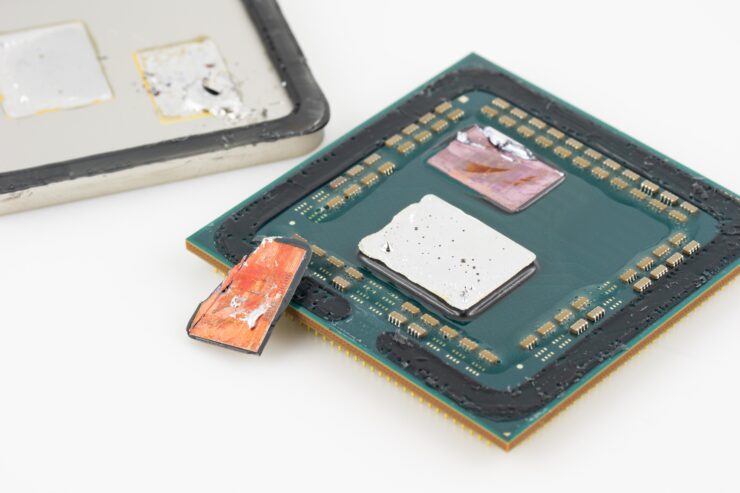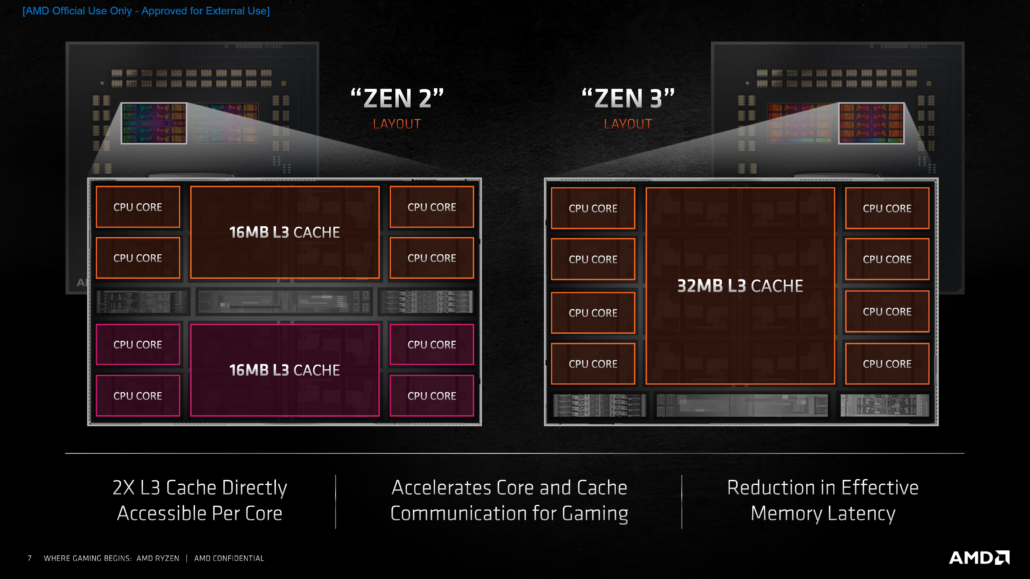
We have all seen the AMD Ryzen 5000 ‘Zen 3’ CPU lineup by now and most even have the physical chips in their hands but what’s more interesting about Vermeer is what lies underneath it. The Zen 3 core architecture is incredible, featuring lots of IPC gains and we have only seen a glimpse of the Zen 3 die during AMD’s presentations regarding Ryzen 5000 but Fritzchens Fritz is once again the first to provide high-resolution infrared photos of the processor, giving us a better look at the Zen 3 core.
AMD Ryzen 5000 Zen 3 Desktop CPU Gets First High-Res Infrared Die Shot, Vermeer Fully Detailed
This isn’t the first die that Fritzchens has posted, in fact, every major CPU/GPU has been undressed by him and you can see a load of high-resolution pictures over at his Flickr and you can also follow him over at Twitter to know when he posts his latest die shots. The most recent die shots from him are for the AMD Ryzen 5000 Desktop CPU.
The CPU in particular is the AMD Ryzen 5 5600X which features two chiplets, a single CCD, and the primary IOD. To get the die shots, the CPU had to be delidded by removing the IHS. The Ryzen 5000 CPUs make use of a solder design which makes it hard to delid the chip and disaster struck as Fritz tried to delid the chip. The whole CCD ripped off during the process but most of the silicon was still intact and so was the IOD.
While the Ryzen 5 5600X died too young, the die shots were just enough for Twitter fellow, Locuza, who is well known for mapping down CPU/GPU dies, to make up the rest of the Ryzen 5000 die and present the full die to us. Locuza’s awesome work can be seen below where he mapped out the entire Zen 3 CCD with each aspect and area of the chip accurately mapped.

Some highlights by him include:
- FPU and uCode position appears to be the same.
- L1D$ looks very similar.
- uOP$, L1I$, BTBs was moved a bit and look quite different.
- L2$ appears nearly identical.
- L3$ design has multiple changes.
- A Zen3 core is quite a bit longer than a Z2 Core
Unlike the previous generation design where each AMD Zen 3 CCD comprised of two CCX’s (Core Complexes), the Zen 3 CCD will consist of a single CCX which will feature 8 cores that can run in either a single-thread mode (1T) or a two-thread mode (2T) for up to 16 threads per CCX. Since the chip houses a maximum of two CCDs, the core and thread count will max out at 16 cores and 32 threads which is the same as the existing flagship AM4 desktop CPU, the Ryzen 9 3950X.

Each AMD Zen 3 core will feature 512 KB of L2 cache for a total of 4 MB of L2 cache per CCD. That should equal 8 MB of L2 cache on a dual CCD CPU. Along with the L2 cache, each CCD will also comprise of up to 32 MB of shared L3 cache. For Zen 2, the L3 cache was split between the two CCX’s with each CCX having their own separate (Up To) 16 MB cache. The size of the cache remains the same per CCD but now all cores can share a larger number of L3 cache.
-
AMD Zen 3 Core Complex Die (CCD):
- Consists of one CCX
The AMD Zen 3 CCX consists of:
- Up to 8 cores where each core may run in single-thread mode (1T) or two-thread SMT mode (2T)
for a total of up to 16 threads per complex - 512KB of L2 per core for a total of 4MB L2 per CCD
- Up to 32MB of L3 shared across all cores within the complex
Additional details reveal that the AMD Zen 3 CCD measures at 83.736mm2 (11.270 x 7.430mm). The Zen 2 CCD was around 72mm2 which makes Zen 3 around 16% larger in size than Zen 2. The 12nm IOD (I/O Die) measures the same as the Ryzen 3000 lineup at 124.29mm2 (12.900 x 9.635mm) and makes it the largest chip on the interposer. Overall, this is one hell of work from Fritz and Locuza, we definitely can’t wait to see more die shot close-ups and analysis by them in the future!







More Stories
AMD Radeon RX 6800 XT “Big Navi” GPU Alleged 3DMark Benchmarks Leaked – Faster Than GeForce RTX 3080 at 4K, Slower In Port Royal Ray Tracing
AMD Ryzen 7 5800H 8 Core & 16 Thread Cezanne ‘Zen 3’ High-Performance CPU Shows Up, Early ES Chip With 3.2 GHz Clocks
BitFenix Announces Two New Cases, The Nova Mesh SE and the Nova Mesh SE TG